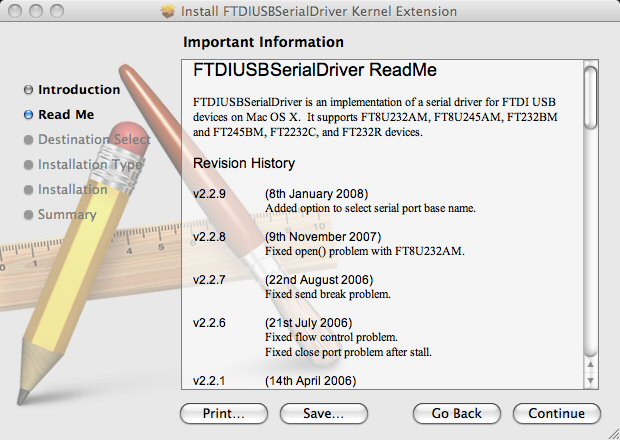
The DCC Decoder Programmer
Links to SPROG web page
Support & FAQ
Buy Now!
Contact sprog@bbmgroup.com

Installing SPROG II on Mac OS-X or macOSNote: Not SPROG IIv3, SPROG IIv4, SPROG 3 or SPROG-Nano, where these steps are not required. |
Install USB driversUSB drivers for SPROG II need to be installed to use them on your Mac.
Mac OS X 10.11 El Capitan requires signed drivers for USB adapters.
For MacOS 10.4 to 10.8, you will use FTDIUSBSerialDriver_v2_2_18.dmg; see JMRI.org for more information about running JMRI on older Macs. For MacOS 10.9 and later, use FTDIUSBSerialDriver_v2_4_2.dmg which is signed by Apple; (Note: older versions of MacOS are no longer supported with the newer versions of JMRI. You can still use older versions of JMRI, but may have limited features.) In the Apple Safari browser, you will be navigated to the files, and you need to double-click on the highlighted ".dmg" file to open it.
Using Firefox, the ".dmg" file will be opened for you
Run the installer by double clicking on the FTDIUSBSerialDriver.pkg icon.
When the installation is complete, you must reboot the computer, and then return to this page of the installation. Connect Sprog II and complete the Driver setupWhen the computer has rebooted, plug in the power to the SPROG, and the USB cable from the SPROG to the computer.
if this was successful, move down to Start DecoderPro
For those more comfortable with the system internals,
to check that the device is installed properly you can see entries in the /dev directory:
The next step is to start DecoderPro, and set preferences for this connection.
|



 Next an
Next an